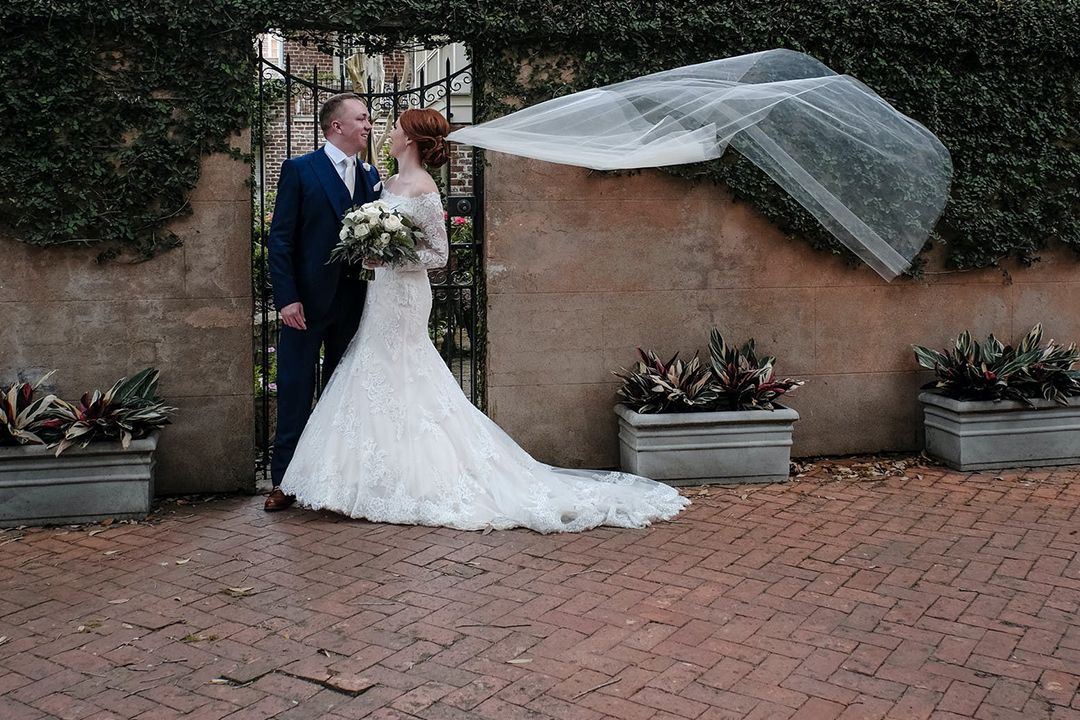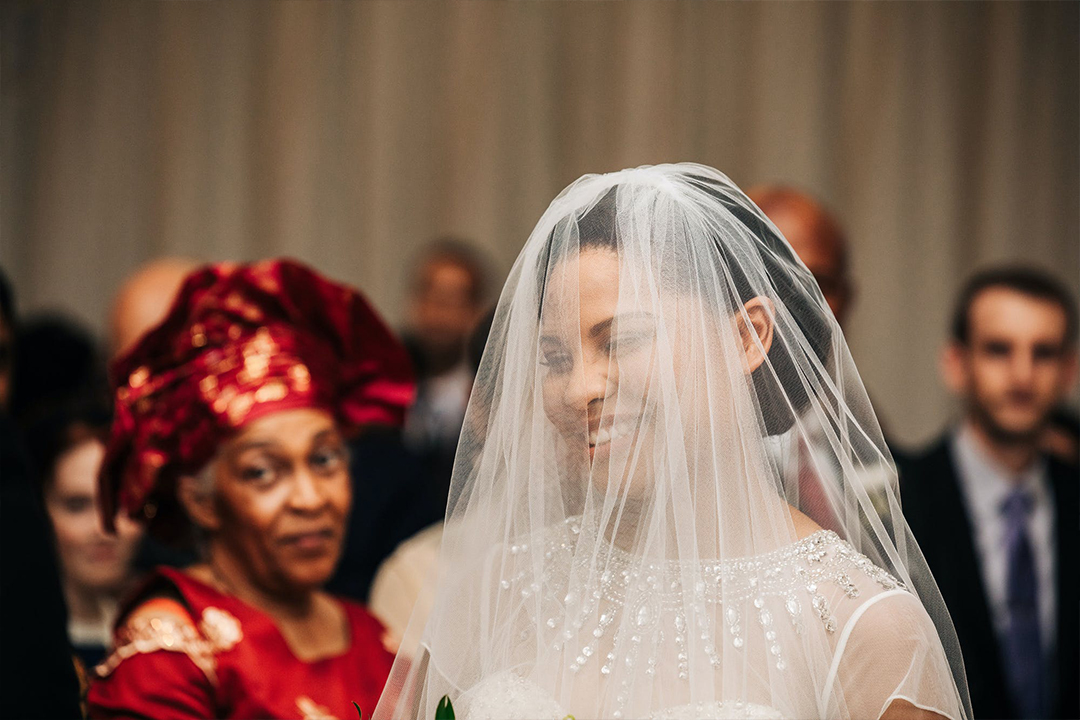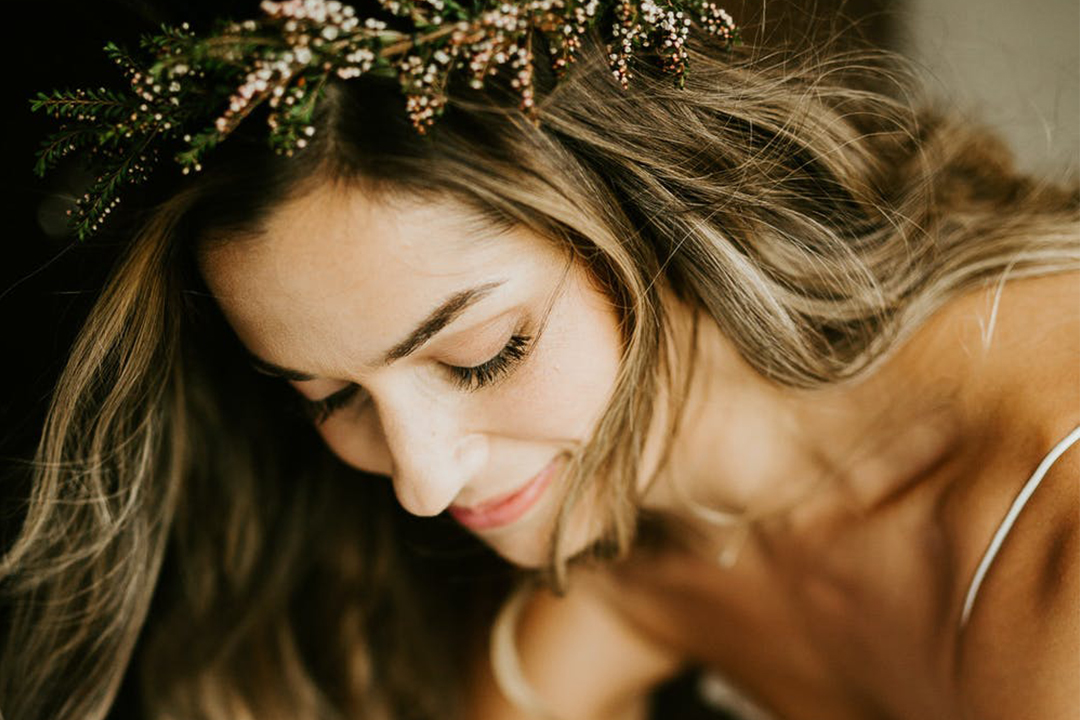- Expert advice/
- Fashion & beauty/
- Shoes & accessories/
- Veil or No Veil: The Pros and Cons of Each
- Shoes & accessories
Veil or No Veil: The Pros and Cons of Each
While wearing a veil on your wedding day isn’t required, it’s definitely something to give some thought to. Deciding whether or not to wear one? We’ve compiled pros and cons for each side—veil or no veil.
Last updated February 5, 2024

Few accessories say “wedding” like a veil. Veils have been a wedding day staple for centuries, possibly dating all the way back to Roman times. Still, as a modern engaged person, you might question whether or not you want to don one on your wedding day. While it definitely isn’t required, it is something to give some thought to. To help you decide, we’ve compiled the most prevalent pros and cons of each side—veil or no veil. If you’re debating whether or not you should wear one, read on.
Wearing a Veil.
Pro: There’s Historical Significance.
While it’s become tradition to wear a wedding veil, many don’t know why or where they came from. Veils are actually said to be the oldest part of the wedding ensemble, dating back to ancient Greek and Roman times. At that point in time, brides would be wrapped from head to toe, representing the delivery of a modest maiden. They were also said to hide or disguise brides, so that evil spirits couldn’t find them and foil their happiness. It’s important to note, though, that veils held different meanings to different religions throughout history (chastity, reverence, and purity, for example).
Yet, for a period of time, veils actually fell out of fashion. In fact, Queen Victoria was the first modern monarch to be married in one, defining the image of a bride for years to come. Though, at this point, its purpose had changed and it served to hide the bride’s face from the groom.
Today, wedding veils are considered more of a classic accessory than a means to describe character or keep evil spirits at bay. Many choose to wear a blusher (a short veil worn over the bride’s face) so that it can be pulled back to present oneself. In just as many cases, though, it’s worn to complement one’s ensemble and be representative of the occasion.

Con: They Can Be Difficult to Manage.
As beautiful and rich in history as they are, wearing a wedding veil can be a difficult task—especially if your wedding ceremony is outdoors. This is one of the main reasons that many contemporary celebrants choose not to wear one; it really is that simple. Managing a veil against the wind, sand, and other elements may not be worth it for someone that doesn’t want to worry about fixing it mid-ceremony. Imagine donning a stunning, cathedral length veil only for it to get blown off course, because no one’s holding it as you walk down the aisle. There’s also high potential for the accessory to get covered in sand and dirt if your wedding takes place outside. Sure, these are potential cases that can be planned for (wear a shorter veil or have someone hold the end as you walk), but having to be aware of that at your wedding isn’t worth it for many.
Pro: They’re Versatile.
While the word “veil” may bring about images of face coverings and long pieces of tulle, the fact is that veils come in many different shapes and styles. So, if you’re wondering how to choose a wedding veil, know that there is a variety of styles available to you. What you may be used to seeing throughout media and history is a blusher, cathedral length veil, chapel length veil, or dupatta (traditionally worn by Indian women). Save for the blusher, these are the longest veil styles. There are plenty of others that lend themselves to different looks. Birdcage, Juliet cap, mantilla veil, and more—there are a number of types to look into.Whether you prefer a long veil or a short one, there’s one out there for you and the bridal look you’re going for. Even if there isn’t, many designers will even help you create a the perfect veil that’s uniquely your own, combining your favorite elements.
Not Wearing a Veil.
Pro: You’re Saving Money.
While you can always DIY a veil with some tulle and a hairclip, professionally made ones aren’t exactly inexpensive. On average, your standard, simple veil can cost you around $250 to $300, while extravagant ones can range in the thousands of dollars. Even more affordable wedding accessory destinations like BHLDN carry veils that start around $150. If you’re planning your wedding with a tight budget, this might be an area where you can cut costs (or, rather, avoid them).
Con: This is Probably the Only Time You’d Wear One.
We’re aware that this point is an entirely sentimental one. Still, it’s essential to point out that your wedding may be the only day that you’ll be able to officially wear a veil. Does this mean that you’re not allowed to don one on any other day of your choosing? Of course not. It is, however, the only formal event centered around you (and your SO) that involves traditionally having and wearing one. It’d be remiss of us not to point out the obvious. When considering whether or not you want to wear a veil, ask yourself if in the future you’d regret not having worn one—or, at the very least, would wonder what it would’ve been like. If there’s any doubt in your mind, give it some more thought and perhaps try out a few different wedding veil styles.
Pro: You Can Substitute One With Something More ‘You.’
If you’re positive that a veil isn’t for you, not wearing one gives you the opportunity to do so many other things with your hair. Whether that means substituting it with another accessory (headbands, crowns, and clips galore) or not having a hair accessory at all is entirely up to you. Perhaps you have a hairstyle in mind that wouldn’t work with a veil (or the type of veil you like, anyway). Doing away with it altogether gives you a bit more creative freedom in this area. Take into account what hair looks and accessories you really enjoy and want to try out. If none of them include a veil, that’s completely okay!

Before You Decide.
Still wondering if you should or shouldn’t wear a veil? Now that we’ve weighed the pros and cons, here are a few final things to think about before making a decision.
- Finalize your wedding attire. Before you give veils a hard yes or no, make a final decision on your outfit (dress, suit, jumpsuit, or otherwise). The wedding veil style, color, fabric, and length should be informed by your choice—and you may decide that one just doesn’t work with what you’ve picked. It all comes down to personal opinion. Unless, of course, you’re debating wearing one that’s a family heirloom, for example, in which case you’ll want to bring it with you to appointments.
- Try one on. Even if you’ve never been a fan of veils, you can’t be sure that you won’t change your mind until you put one on. When figuring out what you’re going to wear (at an appointment or fitting, for example), take a moment to try one out. It may just be that you’re not into a certain wedding veil style. Slip one on and give it a good look, just to be sure.
- Consider a modern veil alternatives. If a good hair accessory is what you’re after, you aren’t limited only to veils. There are plenty of updated options for you to choose from. Think headbands, flower crowns, tiaras, hair vines, barrettes, and headpieces, depending on what fits with your style.
You may be romanced by the look of a traditional veil. You may not feel the need to wear one at all. In any event, whether or not you wear one won’t make you appear any more or less wedding-ready. Stay true to what you like and what’ll make you feel your best. It’s your day (and head) after all.
Speaking of accessories, here are eight more to consider adding to your wedding day ensem
- Expert advice/
- Fashion & beauty/
- Shoes & accessories/
- Veil or No Veil: The Pros and Cons of Each
Find even more wedding ideas, inspo, tips, and tricks
We’ve got wedding planning advice on everything from save the dates to wedding cakes.